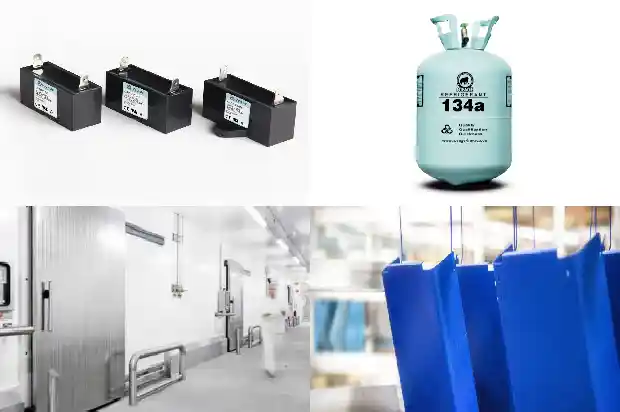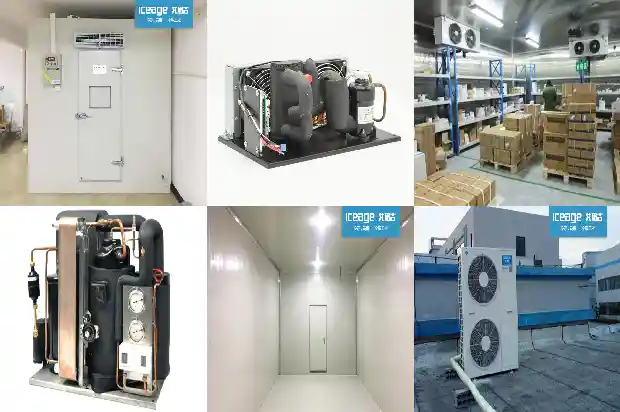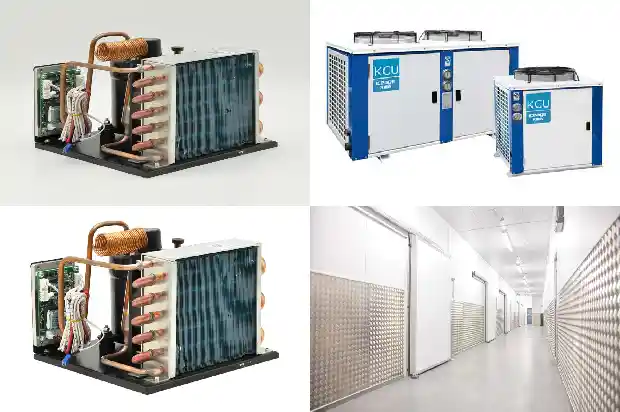Essential for Maintenance! Parameters and Phenomena of Normal Operation of Refrigeration and Heating Systems
2025-02-16
I.

1. Pressure - related
- During summer refrigeration, the normal low - pressure of the refrigeration system is between 4 and 6 Kg.
- During summer refrigeration, the normal high - pressure of the refrigeration system is between 16 and 19 Kg.
- During summer shutdown, when the outdoor temperature is 38℃, the balance pressure of the refrigeration system is about 10 Kg. (For R22 refrigerant)
2. Temperature - related
- During summer refrigeration, the air outlet temperature of the air conditioner should be between 12 and 15℃.
- During summer refrigeration, the temperature difference between the air inlet and outlet of the air conditioner should be greater than 15℃.
- During summer refrigeration, the outer shell temperature of the fully - enclosed reciprocating piston compressor is about 50℃.
- During summer refrigeration, the outer shell temperature of the fully - enclosed piston rotary compressor is about 80℃.
- During summer refrigeration, the outer shell temperature of the fully - enclosed scroll compressor is about 50℃.
3.

- The temperature of the low - pressure pipe is generally about 15℃. Normally, the low - pressure pipe should be dewy but not frosted. If it is frosted, it indicates that the system is short of fluorine or blocked.
- During summer refrigeration, the temperature of the compressor exhaust pipe is generally between 80 and 90℃. If the temperature is too low, it indicates that the system is short of fluorine or blocked. If the temperature is too high, it indicates that there is air in the system or there is a mechanical failure of the compressor.
- During summer refrigeration, fluorine can be added according to the dew - forming condition of the suction pipe. When the fluorine is not enough, the suction pipe will frost. When the upper half of the compressor suction pipe is dewy, it indicates that the amount of fluorine added is appropriate.
- During summer refrigeration, the outer shell temperature of the fan motor generally does not exceed 60℃.
- During summer refrigeration, the indoor drainage pipe should drain water after the air conditioner has been running for one hour.
- During summer refrigeration, the flowing sound of the refrigerant in the capillary tube should be heard in the indoor or outdoor unit. If the flowing sound cannot be heard, it indicates that there is a fault in the refrigeration system.
II. Parameters of the Normal Operation of the Heating System
1. Pressure - related
- During winter heating, the normal low - pressure of the refrigeration system is between 3 and 4 Kg.
- During winter heating, the normal high - pressure of the refrigeration system is between 15 and 22 Kg.
- During winter heating, when the ambient temperature is 10℃, the balance pressure of the system should be about 6 Kg. (For R22 refrigerant)
2. Temperature - related
- During winter heating, when the ambient temperature is too low, the outdoor radiator will frost.
- During winter fluorine - adding, it is better that the low - pressure of the refrigeration system does not exceed 3.5 Kg.
- During winter heating, the air outlet temperature of the heat - pump - type air conditioner should generally be between 35 and 40℃, and the temperature difference between its air inlet and outlet should be greater than 20℃. (The above parameters are highly related to the room temperature or outdoor ambient temperature. Specific analysis should be carried out according to the situation during maintenance.)
- During winter heating, the air outlet temperature of the electric - heating - type air conditioner should generally be between 30 and 45℃, and the temperature difference between its air inlet and outlet should be greater than 15℃.
- During winter heating, the air outlet temperature of the heat - pump - assisted electric - heating - type air conditioner should generally be between 40 and 45℃, and the temperature difference between its air inlet and outlet should be greater than 25℃.
- During winter heating, the outer shell temperature of the compressor should be about 10℃ lower than that in the refrigeration state.
3. Fault Phenomena and Judgments
- During winter heating, when the air conditioner is in the defrosting state, the compressor operates normally, and the indoor and outdoor fans should stop running.
- During winter fluorine - adding, the air conditioner should be set in the refrigeration state. It is best to use quantitative filling. If the conditions do not allow, fluorine can be added by measuring the system high - pressure. Generally, the high - pressure should not exceed 18 Kg. (The maximum should not exceed 22 Kg.)
- During winter heating, when the outdoor ambient temperature is lower than - 5℃, the heating effect of the air conditioner will be significantly reduced, and the outdoor unit will also frost.
- In order to improve the heating capacity, most heat - pump - type air conditioners have added an auxiliary capillary tube. During refrigeration, the auxiliary capillary tube is short - circuited by a check valve, and during heating, the auxiliary capillary tube is conductive. (The auxiliary capillary tube is generally not more than 700mm.)
- During heating operation, there should be no temperature difference at both ends of the check valve.
If there is a temperature difference, it indicates internal leakage.
- When the air conditioner is in the defrosting state, the reversing valve coil is de - energized, and at this time, the outdoor unit will emit an air - flow sound. If there is no such air - flow sound when the reversing valve coil is de - energized, it indicates that the reversing valve has a fault.
- During winter heating, if the outdoor ambient temperature is relatively high, the outdoor unit will drain water.
Related Articles
- Basic Faults and Preventive Maintenance of Water - cooled Units
- Welding Equipment Used in Refrigeration System Maintenance
- Maintenance Methods for Small Modular Cold Storage Failures
- Maintenance Techniques for Air - conditioning Refrigeration Systems
- Maintenance Strategies for the Working Cycle and Electrical Automatic Control of Chillers
- Essential Basics for Maintenance, Debugging of Refrigeration and Air - conditioning Systems
- 8 Maintenance Procedures for Industrial Chillers
- Requirements and Maintenance for Building Meat Food Cold Storage
- Maintenance Methods for Faults in Screw Refrigeration Air - conditioner Compressors
- Maintenance Methods for Refrigerant Leak in Air - conditioner Outdoor Unit
- Knowledge, Installation and Maintenance of Cold Storage Systems
- Are you familiar with the detection and maintenance methods of air conditioner components?
- Maintenance and Operation of Freezing and Cold Storage Warehouses
- Water-cooled Screw Chiller: Operation and Maintenance
- Daily Maintenance Training for Users after Installation of Small and Medium-Sized Cold Storages
- Maintenance of Screw Chiller
- Maintenance of Screw Chiller
- On the maintenance and inspection of external insulation layers of pipes in refrigeration devices
